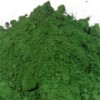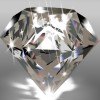Chromium Chloride or Chromic Chloride Hexahydrate Manufacturer Exporter USP FCC Grade Manufacturer Exporter
Crystal Clear Products is a manufacturer exporter company manufacturing several chemicals including Chromium Chloride or Chromic Chloride Hexahydrate and IP BP Ph Eur USP NF JP ACS AR Analytical Reagent FCC Food Grade, Pharmaceutical Chemicals at best prices. The group has offices and factories in India USA and UAE and toll manufacturers in China and sells to almost every country in the world.
The manufacturing facilities of our partner manufacturers have one or more of FDA-cGMP-GLP certification, ISO-9001 certification, Halal and/or Kosher certification, REACH pre-registration ISO-22000 HACCP. We also allow third party inspection of products offered. We can offer small quantities from laboratory and trial packs to large shipments of container loads of material.
Hazard Statements:
H290: May be corrosive to metals.
H302: Harmful if swallowed.
H315: Causes skin irritation.
H319: Causes serious eye irritation.
H332: Harmful if inhaled.
H335: May cause respiratory irritation
H402: Harmful to aquatic life.

Signal Word: Warning
Transport Information
DOT USA, TDG Canada & ADR/RID Europe:
UN-No UN3260
Proper Shipping Name Corrosive solid, acidic, inorganic, n.o.s. Chromic chloride.
Hazard Class 8 Packing Group III.
IMDG/IMO & IATA/ICAO:
UN-No UN3260
Proper Shipping Name Corrosive solid, acidic, inorganic, n.o.s. Chromic chloride.
Hazard Class 8 Packing Group III.
You may please visit:
Chromium Chloride or Chromic Chloride Hexahydrate SDS of Manufacturers

CAS Number 10060-12-5 for Hexahydrate Chromium Chloride or Chromic Chloride Hexahydrate, EINECS: 233-038-3, Molecular Weight: 266.45, Chemical Formula: CrCl3-6H2O
Chromic Chloride USP Grade Chromium Chloride Specifications
Chromic Chloride - Chromium Chloride
CrCl3-6H2O 266.45
Chromium chloride (CrCl3) hexahydrate
Chromium(3+) chloride hexahydrate CAS 10060-12-5
Anhydrous 158.36 CAS 10025-73-7]
Chromium Chloride - Chromic Chloride or Chromium Chloride contains not less than 98.0 percent and not more than 101.0 percent of CrCl3-6H2O
Identification:
A: To 5 mL of a solution (1 in 250) in a test tube add 1 mL of 5 N sodium hydroxide and 10 drops of 30 percent hydrogen peroxide, and heat gently for about 2 minutes: a yellow color develops.
B: To 5 mL of a solution (1 in 250) in a test tube add 5 drops of silver nitrate TS: a white, curd like precipitate is formed, and it is insoluble in nitric acid.
Insoluble matter: Transfer 10 g to a 250-mL beaker, add 100 mL of water, cover the beaker, and heat to boiling. Digest the hot solution on a steam bath for 30 minutes, and filter through a tarred filtering crucible of fine porosity. Rinse the beaker with hot water, passing the rinsing through the filter, and wash the filter with hot water until the last washing is colorless. Dry the filter at 105C the weight of the residue does not exceed 1 mg (0.01%).
Substances not precipitated by ammonium hydroxide: Dissolve 2.0 g of Chromic Chloride or Chromium Chloride in 80 mL of water, heat the solution to boiling, and add a slight excess of ammonium hydroxide. Continue heating to remove the excess ammonia, cool, dilute with water to 100.0 mL, and mix. Pass through a retentive filter, and transfer 50.0 mL of the clear filtrate to an evaporating dish that previously has been ignited and tarred. Add 0.5 mL of sulfuric acid to the filtrate, evaporate on a steam bath to dryness, heat gently to remove the excess acid, and ignite gently: the weight of the residue does not exceed 2.0 mg (0.20% as sulfate).
Sulfate: Prepare a test solution by dissolving 2.0 g in 10 mL of water. Add 1 mL of 3 N hydrochloric acid, filter if necessary to obtain a clear solution, wash the filter with two 5-mL portions of water, and dilute with water to 40 mL. Prepare a control solution in a similar manner, but use 1.0 g of the substance under test, and after the filtration step add 0.10 mL of 0.020 N sulfuric acid. To each solution add 3 mL of barium chloride TS, mix, and allow to stand overnight. Decant most of the supernatants, without disturbing the precipitates, but leaving twice the volume of liquid in the control solution as in the test solution. Dilute each solution with water to 25 mL, and sonicate for 1 minute: any turbidity in the test solution does not exceed that in the control solution (0.01%).
Iron: Dissolve 1.0 g of Chromic Chloride or Chromium Chloride in 100 mL of water, and mix. Transfer 10 mL of this solution to a 100-mL color comparison tube, dilute with water to 45 mL, add 2 mL of hydrochloric acid, and mix (Test Preparation). Proceed as directed for Procedure, except to add 15 mL of butyl alcohol to the Test Preparation and the Standard Preparation at the same time that the Ammonium Thiocyanate Solution is added. Shake for 30 seconds, and allow the layers to separate: the color in the upper butyl alcohol layer from the Test Preparation is not darker than that from the Standard Preparation. The limit is 0.01%.
Specifications of Chromic Chloride FCC Food Grade:
Chromium chloride (III)
Chromium trichloride hexahydrate
Chromium chloride hexahydrate
Chromium chloride hexahydrate (III)
CrCl3-6H2O
Formula weight: 266.45
CAS 10060-12-5
UNII: KB1PCR9DMW [chromic chloride]
DESCRIPTION
Chromic chloride hexahydrate occurs as very dark green to violet crystals or crystalline powder. It is hygroscopic, and freely soluble in water. It is soluble in ethanol and insoluble in ether and in acetone.
Function: Nutrient
Packaging and Storage: Store in tightly sealed containers in a cool, dry place, away from moisture.
IDENTIFICATION
A. Procedure
Sample solution: Dissolve 1 g of the sample in water to a final concentration of 4 mg/mL.
Analysis: In a test tube, add 1 mL of 5 N sodium hydroxide and 10 drops of 30% hydrogen peroxide to 5 mL of the Sample solution, and heat gently for about 2 min.
Acceptance criteria: A yellow color develops.
B. Chloride
Sample solution: 4 mg/mL
Acceptance criteria: Passes test for Chloride.
IMPURITIES
Arsenic: 1 mg/kg maximum.
Cadmium: 1 mg/kg maximum.
Lead: 1 mg/kg maximum.
Mercury: maximum. NMT 1 mg/kg
Chromium (VI): To pass the test; Acceptance criteria: 250 microg/g maximum.
Water-Insoluble matter:
Analysis: Transfer 10 g of the sample to a 250-mL beaker, add 100 mL of water, cover the beaker and heat to boiling. Digest the hot solution on a steam bath for 30 min, and filter through a tared Gooch crucible. Rinse the beaker with hot water, passing the rinsings through the crucible, and wash the crucible with hot water until the last washing is colorless. Dry the crucible at 105C.
Acceptance criteria: The weight of the residue does not exceed 1 mg (0.01% maximum.).
Substances Not Precipitated by Ammonium Hydroxide:
Analysis: Dissolve 2.0 g of the sample in 80 mL of water, heat the solution to boiling, and add a slight excess of ammonium hydroxide to ensure the formation of a precipitate. Continue heating to remove the excess ammonia, cool, dilute with water to 100.0 mL, and mix. Pass through a retentive filter, and transfer 50.0 mL of the clear filtrate to an evaporating dish that previously has been ignited and tared. Add 0.5 mL of sulfuric acid to the filtrate, evaporate on a steam bath to dryness, heat gently to remove the excess acid, and ignite gently.
Acceptance criteria: The weight of the residue does not exceed 2 mg (NMT 0.20% as sulfate).
Contact for Monograph, Uses, Matnfacturing Process, etc of Chromium Chloride or Chromic Chloride Hexahydrate and JP IP BP Ph Eur USP NF FCC Food AR ACS Reagent Grade Manufacturer Supplier Exporter
MANUFACTURER EXPORTER
MUMBAI 400009, INDIA. TEL: (OFFICE) 91-9322665100
info@manufacturerexporter.com
Copyright and Usual Disclaimer is Applicable
Last updated
11/19/2022
Manufacturer Suppliers Exporters at Wholesale Prices from India USA and around the Globe
Aluminum Chloride Anhydrous or Aluminium Chloride Hexahydrate -- Aluminum Chlorohydrate or Aluminium Chlorohydrate -- Ammonium Chloride Crystals & Blocks -- Ammonium Chloride IP BP USP ACS AR Analytical Reagent FCC Food Grade -- Calcium Chloride Fused Anhydrous Dihydrate Solution -- Calcium Chloride IP BP USP ACS AR Analytical Reagent FCC Food Grade -- Choline Chloride -- Cobalt Chloride -- Copper Chloride -- Magnesium Chloride Anhydrous Hexahydrate -- Magnesium Chloride IP BP USP ACS AR Analytical Reagent FCC Food Grade -- Manganese Chloride -- Potassium Chloride -- Potassium Chloride IP BP USP ACS AR Analytical Reagent FCC Food Grade -- Sodium Bromide -- Strontium Chloride Hexahydrate Anhydrous -- Tin Stannous Chloride -- Tin Stannous Fluoride -- Zinc Chloride --
Chromium Acetate -- Chromium Chloride -- Chromium Picolinate --






